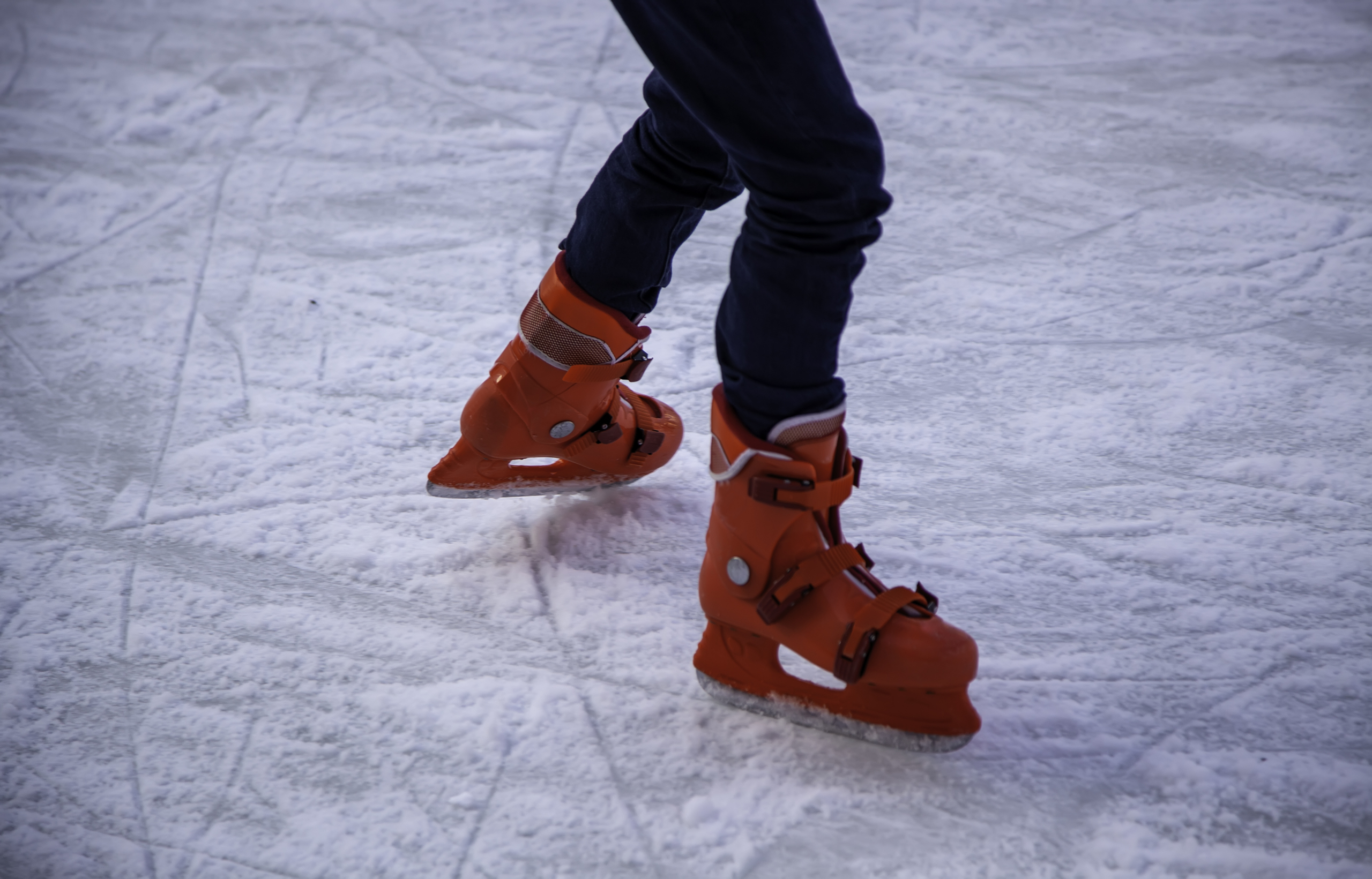Drills for Developing powerful defensive zone exits
Why Clean Exits Are Crucial for Success
In the fast-paced world of hockey, transitioning effectively from defense to offense is paramount. A clean and efficient defensive zone exit isn’t just about getting the puck out of your own end; it’s the foundation for generating offensive opportunities, maintaining momentum, and preventing sustained pressure that can lead to turnovers and goals against. Developing powerful defensive zone exits is a skill set that separates successful teams from those that struggle to break the puck out.
When a team struggles with defensive zone exits, several negative outcomes typically occur. Firstly, it allows the opposing team to maintain offensive zone pressure, tiring out defenders and increasing the likelihood of defensive breakdowns. Secondly, it often results in desperation plays, such as icing the puck, which simply brings the faceoff back into your own end, or turnovers in dangerous areas, leading to high-quality scoring chances for the opposition. Furthermore, poor exits stifle a team’s offensive potential by preventing quick transitions and limiting the ability to attack with speed and numbers.
Conversely, a team proficient in executing clean breakouts gains significant advantages. They can transition quickly, catching opponents off guard and creating odd-man rushes or controlled entries into the offensive zone. Successful exits conserve energy by reducing time spent defending under duress. They build confidence throughout the team, knowing they can reliably move the puck out of trouble. Ultimately, mastery of the defensive zone exit is a critical component of puck possession hockey, allowing a team to spend more time on offense and less time defending.
Understanding the ‘why’ behind effective exits is the first step. It highlights the necessity of dedicating practice time and strategic focus to this fundamental aspect of the game. Without the ability to consistently and effectively move the puck out of the defensive zone, even the most potent offense or stingiest defense will face significant challenges.
The Fundamental Skills Behind Effective Defensive Zone Exits
Executing powerful defensive zone exits requires a blend of individual skills and collective team understanding. It’s not just about one player making a great pass; it involves multiple players performing their roles and utilizing core hockey skills effectively. Let’s break down the fundamental abilities necessary:
- Skating Proficiency: Agility, speed, and edge work are crucial. Defensemen need the ability to pivot quickly, escape forecheckers, and gain separation. Forwards supporting the breakout need speed to get open and agility to change lanes. Strong edge work allows players to protect the puck along the boards and turn away from pressure.
- Puck Control: Maintaining control of the puck under pressure is vital, especially in tight spaces along the boards or in the corners. This includes basic stickhandling, protecting the puck with your body, and receiving passes cleanly, even on your backhand or while moving.
- Passing Accuracy and Vision: The ability to make crisp, accurate passes to teammates, whether short D-to-D passes, passes to forwards breaking out, or longer stretch passes, is non-negotiable. Crucially, players need vision to read the play, anticipate where teammates will be, and identify the best passing option under pressure. This includes knowing when to make a quick pass versus when to carry the puck. Different pass types, like saucer passes over sticks or bank passes off the boards, add valuable tools to a player’s repertoire.
- Reading the Play and Communication: Hockey is a dynamic game. Players must constantly read the opposing forecheck, anticipate their movements, and react accordingly. Effective communication, both verbal and non-verbal (like pointing or calling for the puck), is essential for coordinating breakout patterns and ensuring players are aware of support and pressure.
- Puck Battles: Winning 1-on-1 battles along the boards or in front of the net is often the starting point of a defensive zone exit. Strong lower body strength, leverage, and determination are key to gaining possession of the puck in contested situations.
- Decision Making: Perhaps the most complex skill, deciding whether to pass, skate, chip the puck out, or delay is critical. This decision is influenced by the forecheck, teammate positioning, and score clock. Good decision-making under pressure comes with experience and practice.
Mastering these individual skills provides the raw material for effective defensive zone exits. However, it’s the synergy of these skills within a team structure that truly creates powerful breakouts. Practice must therefore focus on developing these skills both in isolation and in game-like scenarios.
Developing Powerful Defensive Zone Exits Through Focused Drills
Theoretical understanding and individual skill are foundational, but developing powerful defensive zone exits requires deliberate, focused practice. Drills are the bridge between knowing what to do and being able to execute it consistently under pressure. A progression of drills, starting simple and increasing in complexity and pressure, is essential.
Initially, drills should focus on the fundamental skills in a controlled environment. This might involve simple passing drills between defensemen, skating drills focused on pivots and agility, or puck control drills in tight spaces. The goal here is to build muscle memory and comfort with the basic movements and techniques required for breakouts.
Once basic proficiency is established, drills should incorporate more game-like elements. This means adding teammates, simulating puck retrieval situations, and practicing specific breakout patterns. These drills help players understand their roles and responsibilities within the team’s system and how to interact effectively with linemates and defense partners.
Progression is key. Start with stationary or low-speed drills and gradually increase speed and introduce dynamic elements. For instance, a simple D-to-D passing drill can evolve into a drill where defensemen retrieve a puck behind the net and execute the pass while a forward presents a breakout option. The next step might be adding a passive forechecker to simulate initial pressure.
Focused drills allow coaches to isolate specific components of the breakout. Is the issue failed passes? Design drills emphasizing accuracy and timing. Is it puck retrieval under pressure? Create drills focused on winning battles and making quick decisions from the corner. By breaking down the exit process into smaller, manageable parts, players can work on their specific weaknesses and build confidence.
Moreover, drills are the time to reinforce communication. Players should be encouraged to talk to each other, calling for the puck, indicating support, and communicating potential threats. This habit developed in practice will translate directly to improved awareness and coordination during games.
Developing powerful defensive zone exits is an ongoing process. It requires repetition, attention to detail, and a willingness to work on both individual skills and team coordination. The right drills, executed with focus and intensity, are the bedrock upon which successful breakouts are built.
Drill Breakdown Mastering Specific Exit Techniques
To truly master defensive zone exits, breaking down the process into specific techniques and drilling them repeatedly is crucial. Different situations in the defensive zone require different exit strategies. Here’s a look at some key techniques and how to drill them:
The D-to-D Pass and Up
This is one of the most common and fundamental breakout techniques. It involves one defenseman retrieving the puck behind the net and passing it to their defense partner on the opposite side, who then moves the puck forward to a waiting forward.
- Drill Setup: Defenseman A retrieves a puck from behind the net. Defenseman B is positioned on the opposite side. Forward C is positioned at the hash marks or blue line, presenting a target.
- Execution: Defenseman A makes a crisp pass to Defenseman B. Defenseman B receives the pass, skates a few strides, and passes to Forward C, who exits the zone.
- Focus: Accuracy and timing of passes, receiving pucks cleanly, communication between defensemen (Hard! or partner’s name), forward presenting a good target.
The Wheel
Used when there is pressure on the defenseman retrieving the puck, the defenseman skates behind the net and continues up the strong-side boards, often with a forward supporting closely.
- Drill Setup: Defenseman A retrieves a puck from a corner or behind the net. Forward B is positioned along the boards, providing support.
- Execution: Defenseman A skates with the puck behind the net and continues up the boards. Forward B provides a close support option or skates ahead to receive a potential pass. The defenseman might pass to the forward or continue skating if space allows.
- Focus: Defenseman’s skating speed and puck control while moving, forward support positioning, reading pressure to decide whether to pass or carry, protecting the puck along the boards.
The Reverse
Similar to the wheel, but the defenseman changes direction behind the net to go up the weak-side boards, often involving a pass to the weak-side defenseman or a forward.
- Drill Setup: Defenseman A retrieves a puck from a corner. Defenseman B is on the opposite side. Forwards C and D are breakout options.
- Execution: Defenseman A skates behind the net but then reverses direction, either passing to Defenseman B or carrying the puck towards the weak-side boards looking for a forward outlet pass.
- Focus: Defenseman’s pivot and skating backward/forward transition, clear communication (Reverse!), identifying the best outlet option (pass or carry), teammate support on the weak side.
Corner Retrieval and Support
Focuses on the initial battle and support. A defenseman retrieves a puck in the corner with a forward supporting.
- Drill Setup: Puck placed in the corner. Defenseman A and Forward B go into the corner. Coach or another player can provide passive or active pressure.
- Execution: Defenseman A battles for the puck. Forward B supports by getting into a good receiving position. Once possession is gained, the defenseman makes a quick pass to the supporting forward, who then exits.
- Focus: Winning puck battles, quick release of the puck, forward support angles and timing, communication (Support!).
Table: Basic Breakout Techniques Compared
| Technique | Primary Action | When to Use | Key Benefit |
|---|---|---|---|
| D-to-D Pass and Up | Defenseman passes to partner, partner passes to forward. | When space allows behind the net, low pressure. | Uses width of the ice, creates angle for forward pass. |
| Wheel | Defenseman skates with puck up strong-side boards from behind net. | Pressure on retrieving D, strong-side support available. | Maintains puck control, can draw forecheckers. |
| Reverse | Defenseman changes direction behind net to weak side. | Strong pressure on strong side, weak-side option open. | Surprises forecheckers, utilizes weak-side space. |
| Chip Off Glass/Boards | Puck chipped high off the glass or hard off boards past forecheckers. | Under heavy pressure, limited time/space. | Gets puck out quickly, buys time for line change/regroup. |
These drills are just a starting point. They can be modified endlessly by adding more players, increasing speed, limiting touches, or adding obstacles. The goal is to make players comfortable and proficient in executing various techniques based on the situation.
Increasing Difficulty Practicing Exits Under Pressure
Drills without pressure are useful for teaching basic mechanics, but hockey is played under constant pressure. To develop truly powerful defensive zone exits, players must practice executing these techniques with opponents actively trying to stop them. Adding pressure simulates game conditions and forces players to make quicker decisions, execute skills under duress, and communicate effectively when facing resistance.
Here’s how to progressively add pressure to breakout drills:
- Passive Forecheckers: Start with forecheckers who only skate through the zone or stand in passing lanes without actively trying to steal the puck. This helps players get used to having opponents present and practicing scanning the ice with opposition around them.
- Semi-Active Forecheckers: Forecheckers can apply light stick pressure or skate towards the puck carrier but are instructed not to fully engage in a battle. This increases the need for quick decisions and accurate passes without overwhelming the players trying to break out.
- Active Forecheckers with Limitations: Forecheckers can actively pursue the puck carrier but might be limited in some way, such as only being allowed to pressure the defenseman or only being allowed to use their stick (no body contact). This allows players to practice handling pressure without full-game intensity initially.
- Full Active Forecheck (Simulating Systems): Have 1, 2, or even 3 forecheckers actively trying to prevent the breakout. Instruct the forecheckers to execute specific forechecking systems (e.g., a 2-1-2 forecheck where two forwards pressure the defensemen and one forward covers the middle, or a 1-2-2 trap at the red line). Practicing against different forechecks helps players recognize the system and identify the potential outlets or weaknesses.
- Add Backcheckers: As the breakout progresses, add backchecking forwards from the opposing team to simulate defending against a quick transition. This forces the exiting players to make decisions faster and potentially adapt the breakout based on back pressure.
- Small Area Games Focused on Breakouts: Design small area games that start with a defensive zone retrieval and require a successful exit to score or transition to another zone. This puts breakout execution into a competitive context.
- Time Constraints: Add time limits to drills, forcing players to execute the exit within a specific timeframe. This simulates the urgency often felt in a game situation.
- Conditioning Under Pressure: Combine breakout drills with conditioning elements. Players must execute the breakout effectively while fatigued, just as they would in the later stages of a shift or game.
Practicing under pressure is where players truly learn to read the game. They learn to recognize pressure points, identify open teammates quickly, decide when to hold the puck versus when to move it immediately, and communicate effectively in a chaotic environment. It also builds mental toughness and composure, vital attributes for successful breakouts in crucial game moments.
Coaches should provide feedback during these pressure drills, helping players understand why certain breakouts failed and what alternatives could have been attempted. Video analysis can also be incredibly valuable, allowing players to see their positioning and decision-making under pressure.
Game Application Applying Exit Drills in Real Situations
The ultimate goal of practicing defensive zone exits is to execute them flawlessly in real game situations. Translating drill execution to game performance requires understanding how to read the constantly evolving dynamics of a hockey game and applying the appropriate breakout strategy.
Firstly, players must learn to read the opposing team’s forecheck. Is it aggressive? Passive? Are they sending one, two, or three forwards deep? Are they using a specific system like a wedge or a high-pressure trap? Recognizing the forecheck allows the defensemen and supporting forwards to anticipate pressure and plan the exit accordingly. For instance, against an aggressive two-man forecheck, a quick D-to-D pass or a chip off the glass might be necessary, whereas against a passive forecheck, there might be time for a carry or a more complex breakout pattern.
Communication is even more critical in a game than in practice. Defensemen need to communicate with their partners and forwards about pressure, available outlets, and the planned exit. Forwards need to communicate their availability as passing options and their positioning. Loud, clear communication cuts through the noise of the game and ensures everyone is on the same page.
Decision-making under live pressure is the true test. Players must quickly process information – the location of the puck, teammates, opponents, and available space – and make the optimal decision. Should the defenseman carry the puck? Pass to the strong-side forward? Reverse it to the weak side? Chip it out? Delay and wait for support? These decisions are made in split seconds and can dictate the success or failure of the exit.
Effective breakouts often involve the entire five-man unit on the ice. Forwards need to get into proper breakout positions, providing viable passing options for the defensemen. Centers often drop low to support the defensemen or act as a primary outlet. Wingers need to get wide and create space. Everyone has a role in clearing the zone effectively.
Adapting to the situation is also key. A team might have a primary breakout strategy, but if the opponent is effectively shutting it down, players must recognize this and adjust. This might involve using a different technique, changing the point of attack, or even resorting to a simpler get it out approach if under severe duress.
Successful defensive zone exits are the catalyst for offense. Once the puck is safely out of the defensive zone, the focus immediately shifts to transition and attacking the opponent. A clean exit allows players to attack with speed and structure, leading to controlled zone entries and opportunities to boost offense through strategic puck possession in the offensive zone. Without the ability to get the puck out, offensive strategies become irrelevant.
Coaches play a vital role in game application by reinforcing the lessons learned in practice, providing feedback during games, and helping players understand the strategic nuances of different breakout situations. Reviewing game film is invaluable for identifying areas for improvement and celebrating successful executions.
Developing powerful defensive zone exits is a continuous process of learning, practicing, and refining. It requires dedication to mastering fundamental skills, executing specific techniques in drills, practicing under increasing pressure, and applying that knowledge and skill effectively in the unpredictable environment of a real game. It’s a critical skill for every player and every team aiming for success on the ice.
Furthermore, understanding the opponent’s tendencies is a part of game application. Does a particular forechecker always pursue one way? Does the opposing team tend to collapse heavily, leaving certain lanes open? Scouting opponents and communicating that information helps players make more informed decisions during breakouts. This strategic awareness, combined with well-drilled execution, elevates a team’s ability to exit their zone and transition effectively.
Consider also the impact of special teams. Breakouts during a penalty kill are significantly different from those at even strength. Shorthanded breakouts often prioritize clearing the puck safely rather than attempting a controlled transition, although opportunities for shorthanded rushes do arise from quick, smart exits. Similarly, breakouts on the power play, especially if the penalty expires while the team is in the defensive zone, require a rapid transition to capitalize on the man advantage. Practicing exits in these specific scenarios ensures the team is prepared for all game situations.
Another aspect of game application is managing fatigue. Towards the end of a long shift or a tough game, execution can break down. Players need to rely on their training and communication to ensure exits remain clean even when tired. This is where the conditioning incorporated into pressure drills pays off. Fatigue can lead to lazy passes, poor decisions, and turnovers, all detrimental to successful exits.
Finally, celebrating successful breakouts and learning from unsuccessful ones is part of the process. When a breakout works well, review it to understand why. Was it good communication? A perfectly executed pass? Recognizing an open lane? When a breakout fails, analyze the reasons. Was it a missed assignment? A poor decision? A fundamental skill breakdown? Continuous analysis and learning are key to long-term improvement.
Developing powerful defensive zone exits isn’t a one-time fix; it’s a core competency that requires constant attention and refinement throughout a season and a player’s career. It’s a testament to teamwork, individual skill, strategic understanding, and the ability to perform under pressure. Teams that prioritize and master this crucial phase of the game are better equipped to control possession, limit scoring chances against, and ultimately create more offense.
Achieving mastery in defensive zone exits involves commitment from every player on the ice. Defensemen are the primary initiators, needing poise and skill to retrieve and distribute the puck. Forwards act as vital support, providing targets and creating space. The center’s role is often hybrid, supporting deep in the zone and then transitioning quickly up ice. Every position has responsibilities that contribute to the collective success of getting the puck out clean.
Coaches can implement visual cues or call-out systems to help players trigger specific breakout plays based on the forecheck they see. This helps standardize responses and reduces hesitation. For example, a coach might use hand signals or specific words to indicate whether to run a ‘wheel’, ‘reverse’, or ‘middle lane drive’ breakout.
Beyond the technical aspects, the mindset of the players is important. They need to be confident and composed under pressure, trusting their teammates and the system. Building mental toughness in hockey, which includes staying calm in chaotic defensive zone situations, directly impacts the success of breakouts. A panicked player is more likely to make a rushed, inaccurate pass or turn the puck over.
In conclusion, the journey of developing powerful defensive zone exits is multifaceted. It encompasses refining individual skills, practicing specific techniques through targeted drills, learning to perform under increasing pressure, and intelligently applying these skills and strategies in the dynamic environment of a hockey game. It requires dedication from players and coaches alike, consistent communication, and a commitment to continuous improvement. Mastering the breakout is not just a defensive skill; it’s the essential first step in becoming a possession-oriented, offensive-minded team.
Have questions? Contact us here.

We use only the finest ingredients to produce stellar tastes.












